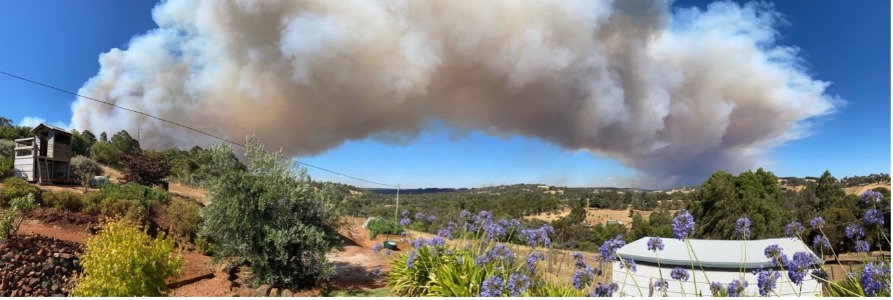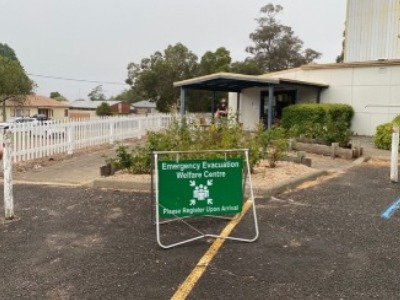Coronastream March 2022: Progress, of sorts
Posted on March 21, 2022 by Dr. Tim Inglis
In this special blog series, medical microbiologists led by Dr Tim Inglis summarise some of the research that will be essential to inform COVID-19 countermeasures. Find out more about the project in Dr Inglis' Editorial 'Logic in the time of coronavirus', published in the Journal of Medical Microbiology.
In these apocalyptic times, we need to hold onto every scrap of positivity. This month, one of the last redoubts to COVID finally opened its border to a trickle of people from the outside world. After almost two years of splendid isolation, Western Australia has conceded that continued border closure was no longer necessary now that COVID was out and active in our community. What the critics of a cautious approach to the pandemic gloss over is that we’ve had a relatively stress-free existence here for two years, and have had plenty of time to prepare for the arrival of the latest variant of concern. Keeping COVID at bay sounds like the responsible thing to do until vaccine uptake has maxxed out and disease severity has eased. To that you can add stockpiling antivirals, immunotherapeutics and staffed isolation ward beds. Only a few weeks into our first real COVID surge is obviously too early to judge exactly how much excess mortality and morbidity has been avoided; nonetheless it feels like progress.. of sorts.
But the challenges haven’t let up: massive bush fires, even bigger floods, a newly emerging fatal infection (Japanese encephalitis), and the threat of war with all the chaos that brings. Here, on the other side of the world, we feel for colleagues, friends and family members caught up in the Ukraine conflict. As practitioners of medicine and science, we struggle to understand how terror on this scale can be allowed against an innocent population. We recoil from the reports of attacks on civilian populations including their clinical and academic centres. Naturally occurring disasters are a little easier to understand, and sometimes even predict. Your blogger’s recent brush with a large bushfire in rural Western Australia was a bit close for comfort (Fig. 1&2). A prompt response by the fire and emergency services prevented loss of life, and minimised damage to private property, though it took two days to bring the fire fully under control. The scale of flooding and loss of life in Eastern Australia was a disaster of greater magnitude and attracted help from overseas.
The common thread running through all these events, whether natural or anthropogenic, is the spontaneous generosity of communities to their suffering neighbours. People help their neighbours when there’s an urgent need, and thus it is on the Ukraine’s western border where refugees from the fighting seek a safe haven. The massive population displacement now taking place guarantees a series of infectious disease challenges in its wake (see WHO comment below). Of particular concern is how the large number of displaced people will influence the continued evolution of SARS-CoV-2, which has demonstrated its predilection for the unfortunate and the vulnerable among us. In the middle of all this human suffering, it is important to remember that refugees urgently need our support, no matter what their COVID status. As Europe continues to experience ripples of COVID, the immediate effect may be modest. The greater tragedy, if that is possible, is the additional burden of disease carried by those who are unable to flee the bombs and missiles, and who don't even have access to clean running water.
CONGRUENCE: Clinical diagnosis
In this study, a British group assessed a faster laboratory-free COVID-19 triage method for emergency department admissions. They improved a previous method, called CURIAL-Lab into CURIAL-Rapide which relied on vital signs and full blood count obtained with a point of care device, in comparison with PCR results. Over 72,000 patients were assessed between December 2019 and March 2021. The CURIAL-Rapide method achieved a sensitivity of 81.8% and specificity of 63.6%. Sensitivity increased to 88.2% when CURIAL-Rapide and a lateral flow device result were combined. In a prospective cohort, the median time to CURIAL-Lab result was 45 minutes – faster than a lateral flow device or PCR test. The authors concluded that CURIAL-Rapide was able to provide a rapid, laboratory – independent screen when combined with near-patient full blood count, and was able to reduce the number of patients with negative COVID-19 tests who were triaged to COVID-19 suspected areas.
CONSISTENCY: Omicron decoupling
Population Immunity and Covid-19 Severity with Omicron Variant in South Africa.
The SARS-CoV-2 variant known as Omicron (B.1.1.529) was first identified in South Africa at the end of 2021. This sero-epidemiological surveillance study documents the decoupling of death and hospital admissions from incidence of infection, which occurred while Omicron was circulating in South Africa. This was the fourth wave of COVID, and it both increased then decreased more quickly than the previous waves. Hospital admissions (11.2%), recorded deaths (3.9%) and excess deaths (3.3%) during the Omicron wave were higher than the preceding Delta wave, at 43.6%, 49.3% and 52.7% respectively. Only a minority of people over 12 years of age had been vaccinated, so the difference cannot be entirely attributable to COVID vaccination. The authors propose that decoupling of cases from severe disease is the results of cell-mediated immunity through natural infection.
CUMULATIVE DISSONANCE: Programmed cell death
Programmed cell death: the pathways to severe COVID-19?
The pathological processes that underlie disease outcomes in COVID-19 have been attributed to inflammation and cell death. In this paper, Bader and colleagues summarise what is known about the role and impact of programmed cell death on the disease we know as COVID-19. There are three main types of programmed cell death: necroptosis, pyroptosis and apoptosis. All three have been observed in one or more cell types during SARS-CoV-2 infection. While they cooperate through a complex regulatory network to remove infected cells and promote immunity, they can also lead to collateral host cell damage and consequent disease features. The authors speculate that COVID-19 disease outcomes may be associated with the type of cell death that predominates. As many programmed cell death pathways can be activated in COVID-19, it is hard to unravel which cause disease and which are redundant. As COVID-19 is a host-driven disease and severity is dictated by a dysregulated immune response, rather than direct viral cytocidal effect, there are potential targets for therapeutic intervention in programmed cell death pathways, some of which are the subject of preclinical studies or early clinical trials.
COUNTERMEASURES: Treatment and other interventions
Antibody evasion properties of SARS-CoV-2 Omicron sublineages.
This study of SARS-CoV-2 Omicron variant sublineages highlights the threat to the efficacy of current COVID-19 vaccines. It found that BA.2 showed “marked resistance” to 17 of 19 neutralising antibodies tested, including Sotrovimab (S309), which retained activity against the original Omicron variant, though this dropped significantly. A more recently licensed antibody retained potency against BA.2, indicating an unaffected patch within the antibody-binding region that has yet to be affected by spike mutations. The authors conclude that continuing emergence of virus variants will progressively narrow treatment options, prompting a call to devise novel strategies.
RESOURCES
COVID and war in the Ukraine – a WHO perspective
Doctors Without Borders; conditions in Mariupol

Fig 1: Smoke plume over southwest WA as a regional forest burns close to town


